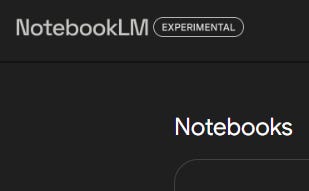Everything you hear in the above Podcast is 100% synthetic and AI-generated.
There are no people, no speakers.
The content was not scripted; instead it was programmed by data, from data.
Each moment, sentence, word, inflection, topic, and tete-a-tete in this “two” “person” “conversation is 100% unreal, as too real as it sounds.
I created with Google’s new debut program NotebookLM, its experimental new tool.
The only piece of content I uploaded was a copy of the United States Constitution.
NotebookLM did all the rest in less than five minutes.
US Consitution text + AI = One full fully synthetic PODCAST - amazing!
Look out Joe Rogan. Below some more information about NotebookLM courtesy of Perplexity.ai.
Google's NotebookLM is an AI-powered research and note-taking tool that offers several key features:
Document Analysis: Users can upload various types of documents (Google Docs, PDFs, text files, Google Slides, and web URLs) for the AI to analyze and summarize.
AI-Powered Assistance: It uses Google's Gemini 1.5 Pro AI model to help users understand complex information, generate summaries, and answer questions about the uploaded content.
Source Grounding: The AI bases its responses on the specific documents uploaded by the user, providing citations and relevant quotes from the source material.
Audio Overview: A new feature that generates podcast-style audio discussions about the uploaded content, featuring two AI hosts who summarize and discuss the material.
Global Availability: As of 2024, NotebookLM is available in over 200 countries and territories.
Privacy Focus: User data is not used to train the AI model, ensuring privacy for sensitive information.
Additional Features: It can create study guides, assist with fact-checking, and help users make connections between different topics in their research.
Limitations: The tool is still experimental, with some known issues like potential inaccuracies, English-only audio discussions, and processing time for large documents.
NotebookLM aims to streamline research processes, enhance learning, and provide a more interactive way to engage with complex information. It's particularly useful for students, researchers, and professionals dealing with large amounts of textual data.















Share this post